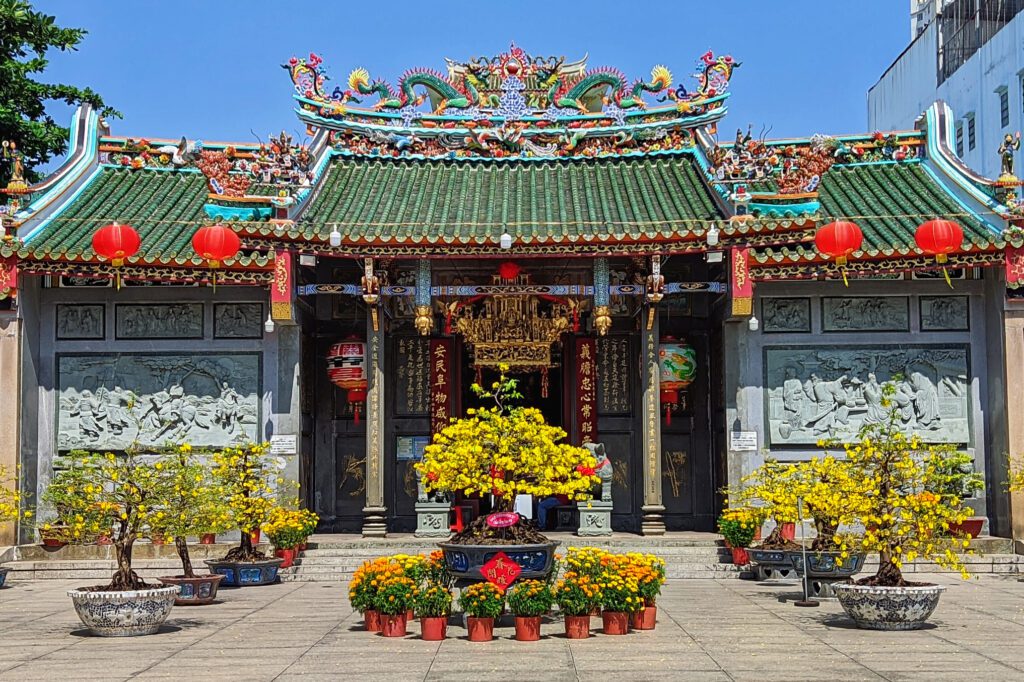Thien Hau Temple – A Glimpse into Chinese Culture in Vietnam
Nestled in the heart of Chinatown (Cho Lon) in Ho Chi Minh City, Thien Hau Temple offers more than a place of worship — it represents a living testament to the deep-rooted Chinese cultural heritage in Vietnam. The Cantonese community in Saigon built this temple to honor Mazu (Thiên Hậu Thánh Mẫu), the goddess of the sea and protector of sailors. Today, visitors from around the world come to experience its spiritual and historical significance.
History and Cultural Significance
Around 1760, the Cantonese settlers in Saigon established Thien Hau Temple to preserve their religious beliefs and cultural identity. For centuries, the temple has served the Chinese-Vietnamese (Hoa people) as a spiritual and cultural center.
Every year, especially during the Lunar New Year (Tet) and Mazu’s birthday (on the 23rd day of the third lunar month), thousands of pilgrims and visitors gather here to offer incense and prayers.
Architectural Highlights
Thien Hau Temple stands out with its classic Chinese architecture. The roof is adorned with intricate ceramic dioramas depicting scenes from Chinese legends. Inside, coils of incense hang from the ceiling, creating a spiritual and visually stunning atmosphere.
The central altar features a statue of Mazu, flanked by her heavenly guardians. The temple’s wooden panels, stone carvings, and porcelain sculptures all reflect the meticulous craftsmanship and traditional beliefs of the community.
🖼️ Fun Fact: Many of the decorations were imported from Guangdong, China, showcasing a strong link to the Cantonese heritage.
How to Visit Thien Hau Temple
📍 Address: 710 Nguyen Trai Street, District 5, Ho Chi Minh City, Vietnam
🕙 Opening Hours: 6:00 AM – 5:00 PM daily
🎟️ Entrance Fee: Free (donations are welcome)
🧘 Etiquette Tip: Dress modestly and speak quietly while inside.
Whether you’re spiritual or simply interested in history and architecture, the temple offers a serene and meaningful stop.
What’s Nearby?
Binh Tay Market – a major market in Cho Lon with fresh produce, souvenirs, and local food
Quan Am Pagoda – another spiritual site with strong Chinese Buddhist influence
Ho Chi Minh City Museum of History – for a broader view of the city’s past
Internal link suggestion:
Planning your visit to Ho Chi Minh City? Check out our Saigon Travel Guide for top attractions and tips.

Final Thoughts
Thien Hau Temple is not just a religious site — it’s a window into the rich tapestry of Chinese-Vietnamese identity. With its beautiful architecture, deep-rooted history, and cultural rituals, it offers a unique perspective on how traditions are preserved and celebrated in modern Vietnam.
If you’re exploring Saigon, make sure this temple is on your list — it’s one of the most atmospheric and authentic places in the city.